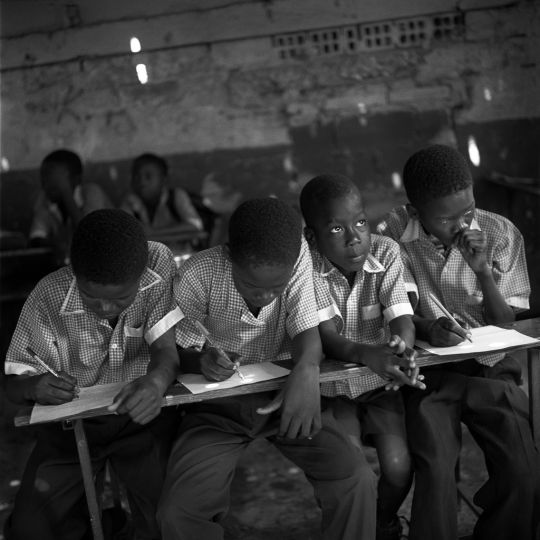How does one capture what has already been captured many times? Specifically, how does one capture Haiti, with its natural disasters, its bright colors, its bleak poverty, and its voodoo rituals? The “Pearl of the Caribbean,” whose colonial nickname has become a slur, is so very photogenic. “It’s easy to take great pictures in this country,” remarked Thomas Kern. “ I wanted to figure out what makes them great” for myself
A curious way of putting things, which points to an engaging line thought on documentary photography. Thomas Kern’s Haitian images are first of all reactive. The German-speaking Swiss photographer, aged 51, traveled to the island for the first time in 1997, on assignment from Du magazine. Shortly thereafter, he moved to the States. He quickly felt uncomfortable with the stereotypes reported by the American media on the permanent state of chaos in Haiti: the political unrest, the burning tires, and the natural disasters culminating in the devastating earthquake of 2010.
For the past twenty years, having moved back to Switzerland, Thomas Kern has been visiting the Caribbean country in an attempt to photograph it in another way. For that purpose, he chose a fail-safe classic: a Rolleiflex loaded with black & white film. The square format has the advantage of immediately containing the disorder and the irrepressible life force. It goes straight to the heart of the matter. The depth of field is shallow, movements uncertain, and bodies and their shadows often clear-cut.
Thomas Kern sees himself as a stranger in a strange land, an observer who will never be able to grasp the full extent of Haitian complexity. He avoids clichés: excessive violence, the pathos of poverty, the few well-off secluded in the hills, or eyes rolling back during rituals.
At the Fotostiftung Schweiz in Winterthur, which houses the exhibition of Thomas Kern’s travel journal, every image speaks for itself. There is no chronology; there are no themes. These shards of the everyday show farm work, schooling, the young and the old, NGOs, the aftermath of earthquakes, insurrections, carnivals, and religion. It took Thomas Kern ten years before he dared to travel to Saut-d’Eau, the heart of the voodoo country: he didn’t want to be reinventing the wheel. If he takes a portrait of a Nepalese peacemaker standing guard before a waterfall, it’s because this presence is charged with meaning. Nepalese UN soldiers brought cholera to the island—an epidemic that still hasn’t been contained. Bringing peace means bringing a new disaster: this is the history of Haiti in a nutshell.
Here is how one photographs what has already been photographed many times: by never forgetting that this medium is, above all, about points of view.
Luc Debraine
Exhibition
Thomas Kern, Haiti. The Perpetual Liberation
From September 17, 2016 to January 29, 2017
Fotostiftung Schweiz
Grüzenstrasse 45
8400 Winterthur
Switzerland
www.fotostiftung.ch





























